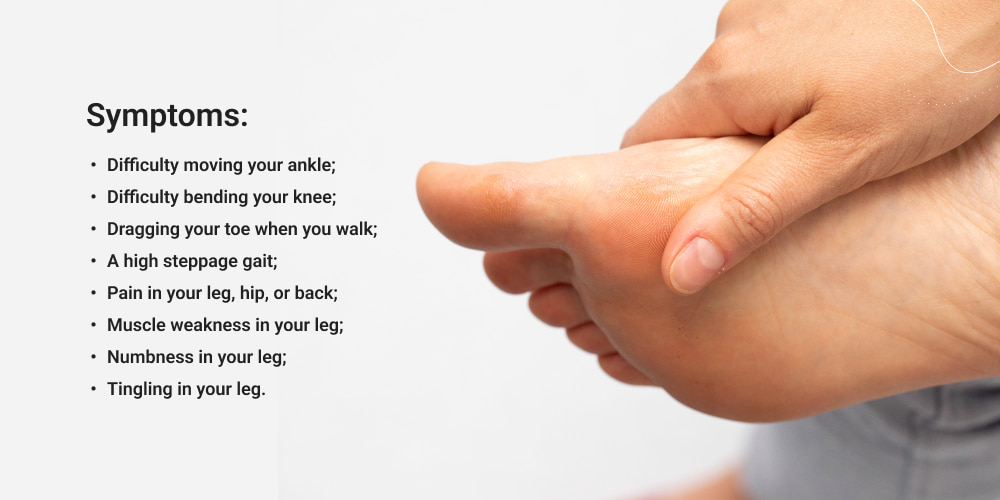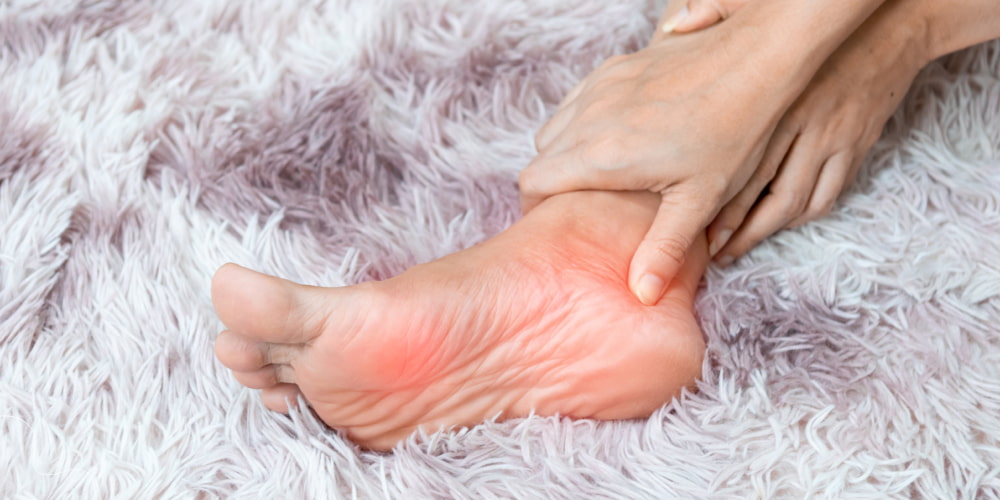Our mobility and movement are essential components of our lives, which ensures our productivity and performance throughout the day. As soon as something happens to our feet, we need to take care of them first, diagnose the problem and determine the treatment.
So, one of the problems associated with the legs is foot drop. This disorder has the following characteristics: difficulty standing, walking, and lifting the leg. Such a disease can occur both suddenly and gradually.
Our article will tell you about the first signs signaling the onset of the disease, symptoms, causes of the onset, and methods of treating foot drop.
What Is Foot Drop?
Foot drop is a condition that prevents the affected individual from being able to raise the front part of their foot. This can make it difficult or impossible to walk on your toes. Some people with foot drop may also have difficulty moving their ankles or bending their knees.
Foot drop is usually caused by nerve damage or muscle weakness. You can treat this disease with physical therapy, braces, or surgery. This disease can occur in 19 people out of 100,000. It is most often diagnosed in men.
This disease is considered a serious ailment that can greatly affect your routine. Therefore, it is very important to see a doctor as soon as you notice that you are having problems moving or operating your legs.
What Are the Symptoms of Foot Drop?
The most common symptom of foot drop is difficulty raising the front part of your foot. This can make it difficult to walk on your toes. Other symptoms of foot drop may include:
- Difficulty moving your ankle.
- Difficulty bending your knee.
- Dragging your toe when you walk.
- A high steppage gait (a way of walking where you lift your leg high to clear your foot).
- Pain in your leg, hip, or back.
- Muscle weakness in your leg.
- Numbness in your leg.
- Tingling in your leg.
If you experience any of these symptoms, you should see a doctor so that they can diagnose the cause and recommend treatment options.
Early Warning Signs of Foot Drop
Because a variety of conditions can cause foot drop, the early warning signs may vary depending on the underlying cause. However, there are some common early warning signs of foot drop that you should be aware of, including:
- Difficulty lifting your foot when walking or climbing stairs.
- Dragging your foot when you walk.
- Tripping or stumbling more often than usual.
- Pain in your leg, hip, or back.
- Numbness or tingling in your leg or foot.
Drop Foot Causes
The most common causes include the following:
- Nerve injury. The most common cause of foot drop is nerve damage (peripheral neuropathy). This damage usually occurs in the nerve that runs from your thigh to your shin (peroneal nerve). The peroneal nerve controls the muscles on the outside of your shin and the top of your foot, which lift your foot when you walk. Nerve damage from diabetes is a common cause of this type of nerve injury. Other causes include injury to your leg or hip, certain types of surgery, and radiation therapy for cancer.
- Muscle weakness or paralysis. Lou Gehrig’s disease, muscular dystrophy, polio, and other conditions that damage the nervous system can cause this disease. Also, an injury or infection that damages the muscles lifting your foot is the cause of foot drop.
- Joint problems. Arthritis and other joint problems can make it difficult to lift your foot high enough when you walk.
- Stroke. Also, people who have experienced a stroke often experience problems with their feet operating.
Risk Factors of Foot Drop
There are a number of factors that can increase your risk of developing foot drop, including:
- Having diabetes or another condition that damages the nerves.
- Having a history of injury to your leg or hip.
- Having certain types of surgery, such as knee or hip replacement surgery.
- Being treated with radiation therapy for cancer.
- Having Lou Gehrig’s disease, muscular dystrophy, or polio.
- Having arthritis or other joint problems.
- Having a stroke.
In general, all causes and risk factors are approximately the same.
How Is Drop Foot Diagnosed?
A timely diagnosis can provide up to 50% of the work performed. After all, with the right diagnosis, you can start treating your disease in time, and your chances of improving your condition will increase significantly. Always seek help from a specialist so that they can diagnose you in time and prescribe the right treatment for foot drop.
The doctor will ask about your symptoms and medical history. They will give you a physical exam. This may include tests to check for nerve damage and muscle weakness. The doctor may also order imaging tests, such as an MRI, to rule out other conditions.
Dropped Foot Treatment
If you have foot drop, several cures options are available depending on the underlying cause of your condition. These treatments include physical therapy, braces, and surgery:
- Physical therapy involves exercises that help improve the affected muscles’ strength and range of motion.
- Braces can help support the foot and ankle and prevent the toe from dragging.
- Surgery can be great for correcting nerve damage or muscle weakness. In some cases, a tendon transfer may be performed to help the affected muscles function better.
The cure that is right for you will depend on the underlying cause of your foot drop. Talk to your doctor to find out which treatment option is right for you based on the severity of your condition and its underlying cause.
When You Should See a Doctor
You should consult a doctor if you find the first signs of this disease. If you notice that you cannot raise your leg normally or you have numbness in your leg, you should contact a specialist for timely assistance. The sooner you seek help from a specialist, the higher your chances of a fast recovery.
Bottom Line
In summary, foot drop is a complex condition that can greatly affect your daily life and impair your mobility. For your limbs to function normally, you need to seek help from a specialist in a timely manner. To do this, always choose a professional clinic with experienced staff. With this approach, you can improve the quality of your life and change your condition.
To do this, you can use the contact us button or call the phone number 214-619-1910. After that, you will receive the necessary help and be able to ask any questions you have.
FAQs
- Why do people get foot drops?
Compression of a nerve in your leg that controls the muscles responsible for elevating the foot is the most frequent cause of foot drop (peroneal nerve).
- What is the prognosis for people with foot drop?
The reason for foot drop affects the prognosis. Injury- or nerve-related foot drop typically exhibits partial or even full recovery. Foot drop is a symptom of developing neurological illnesses and is likely to be a permanent disability.
- Should I worry about foot drop?
Foot drop is a condition that can make it difficult to lift your foot. You need to see a doctor to get proper treatment and improve your condition.
- Does foot drop come on suddenly?
Foot drop symptoms can develop gradually or unexpectedly, making it challenging to stand, walk, or lift the affected foot.












Please, leave your review
Write a comment: